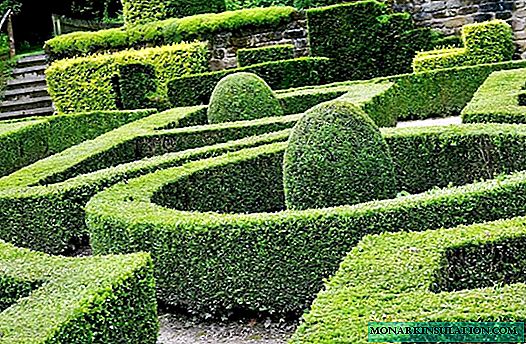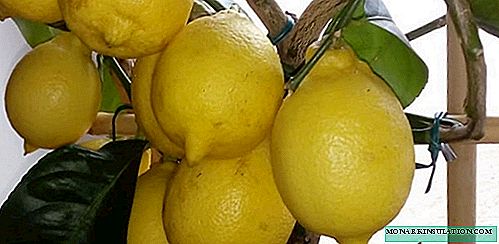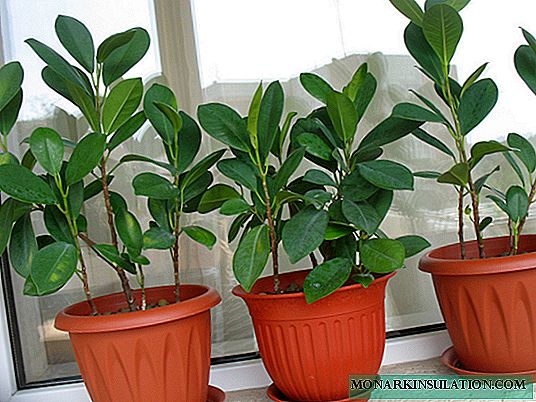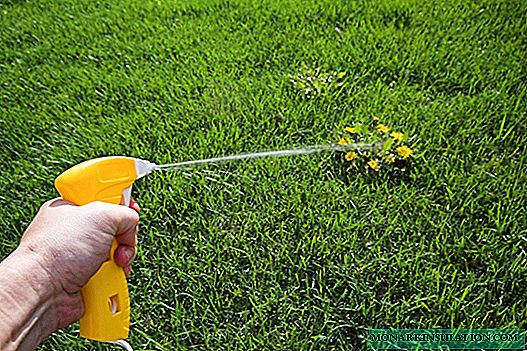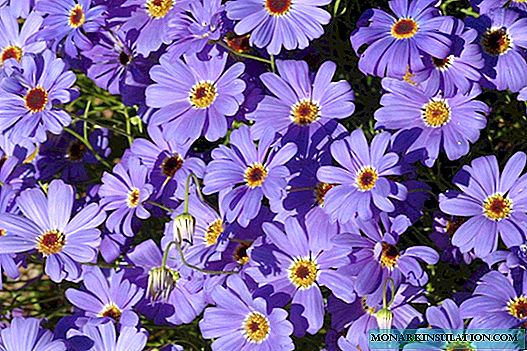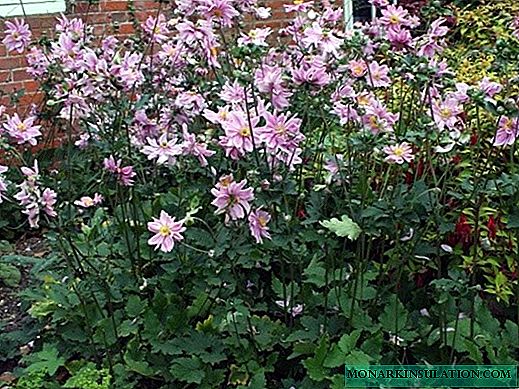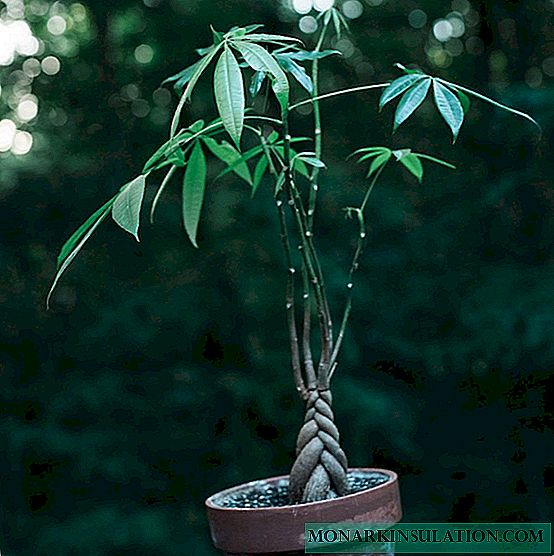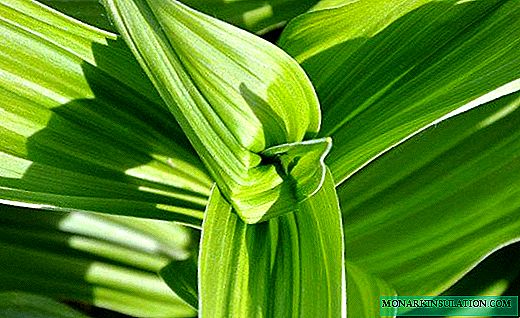Chemeritsa is a perennial herbaceous plant from the Melantius family. It can be found throughout Eurasia. Even in ancient Rome, a flower was popular as an effective tool for combating rodents and insects. While beautiful leaves and lush inflorescences adorn the garden, the roots and shoots are used in folk medicine and gardening to combat parasites. Chemeritsa is also known in Russia under the names "puppeteer", "veratrum", "chemerka".

Botanical Description
Chemeritsa is a rhizome perennial grass with a strong, erect stem. The thickened root is close to the surface of the soil. Many filamentous processes up to 3 mm thick depart from it to a great depth. The height of the ground part is 50-150 cm. From the ground itself, the shoot is covered with large sessile leaves that are arranged in a spiral. Oval leaf plates have smooth edges and a pointed edge. Relief veins are visible over the entire surface of the sheet. Its length is 25-30 cm. In the lower part there is a dense, felt pubescence.



















Chemeritsa grass has been living for more than half a century, but it blooms quite late. The first inflorescences appear in the 16-30 year of life. They form at the top of the stem. Yellow, white or greenish flowers with a diameter of about 1 cm tightly cling to the stem. The buds are opened in mid-July and stored until the end of summer. Pollination occurs with the help of insects or wind. In August, the first fruits appear - flattened seed boxes with soft walls. They contain long brownish seeds.
All parts of the plant are poisonous. Access to children and animals should be limited, and hands should be washed thoroughly after working in the garden. Hives cannot be placed near the flower. Even if the bees survive, their honey will be unfit for consumption.
Popular views
The genus Chemeritsa has 27 species and several hybrid varieties. In Russia, 7 of them grow. The most popular are the following:
Hellebore Lobel. The plant is distributed in coniferous forests from the Caucasus to Siberia. The variety has healing properties due to the high content of alkaloids, mineral salts, amino acids and vitamins. Herbaceous perennial grows up to 2 m in height. A powerful stalk is covered with large folded leaves of a bright green color. Yellowish-green flowers are located in paniculate inflorescences up to 60 cm long.

White hellebore. The variety can be found on an alpine meadow or open mountain slopes. It is used in folk medicine because of the high content of alkaloids. This plant does not exceed 1.2 m in height and is distinguished by a particularly fleshy rhizome. The length of the lower leaves is 30 cm. Closer to the top, they become smaller and narrower. At the top of the stem is a branched panicle, consisting of small white flowers.

Black hellebore. The height of the stem can reach 1.3 m. Large folded leaves at its base grow 40 cm in length. They are arranged next in a spiral. The apical leaves are grouped in 3. Dark red flowers with brown stains are collected in panicle inflorescence. The diameter of the corolla is 1.5 cm.

Hellebore reproduction
Hellebore propagates by sowing seeds or dividing the bush. Seed propagation is considered less effective and requires considerable effort. Fresh seeds without preliminary preparation are sown in October-November immediately in open ground. Crops sprinkled with a thin layer of earth and gently moisturize. In the spring, the first shoots appear. The grown plants dive and transplant to a permanent place. A distance of 25 cm must be observed between the seedlings. Young hellebore should be regularly watered and shaded from direct sunlight.
In regions with harsh and snowless winters, it is recommended to first grow seedlings. Seeds are sown in March, in shallow boxes with moist sand and peat soil mixtures. They are buried by 5 mm, covered with a film and put in a refrigerator or other cool place. After 5-8 weeks, the boxes are moved to a heated room. With the advent of shoots, the film is removed. Seedlings appear unevenly, germination may take several months. Seedlings are grown in the greenhouse until next spring and only then planted in open ground.

In April-May, the hellebore can be propagated by dividing the rhizome. The plant is carefully dug up and freed from an earthen coma. It is important to keep thin roots. The roots with processes are cut into several parts so that at least one kidney remains on each. Delenki immediately planted in a new place with a distance of 30-50 cm. At first, plants must be shaded and often watered.
Growing Features
Caring for hellebore is quite simple. The main difficulty is finding the right place to land. It is advisable to select a partially shaded area. You can plant a chemeritsa under trees with a rare crown or near a fence that will hide the sun at noon.

The soil should be fairly light and well-drained. Loams with the addition of compost and sand are great. The plant will not develop on acidic substrates. It is advisable to immediately choose the right place, because hello does not like transplants.
Chemeritsa needs frequent watering with small portions of water. Although it is able to tolerate droughts, it becomes most decorative with regular irrigation. The soil should be constantly slightly moist, but waterlogging is unacceptable.
In the spring, at the beginning of the growing season, it is recommended to add compost or rotted manure to the soil. During flowering, you can double fertilize hellebore with mineral compounds.

To maintain decorativeness, wilted peduncles should be cut. Shoots and leaves for the winter do not cut. Parts damaged by cold are best removed in early spring. Chemeritsa has good frost resistance, because it grows to the very border with the Arctic. Shelter is not necessary for the winter plant.
Using
Due to the large, corrugated foliage chemeritsa looks spectacular in flower beds or group plantings in the middle of the lawn. You can plant a plant on the banks of water bodies. Against his background, flowers look more expressive. The best neighbors will be eremurus, phlox, or gladiolus.
Gardeners use the toxicity of hellebore. It is planted near other plants in order to deter parasites. An infusion of leaves is used to spray garden trees and shrubs. It is an excellent natural insecticide.
A few decades ago chemeritsa was used as an effective anthelmintic, diuretic and laxative. However, due to the toxicity today, doctors strongly do not recommend taking plant-based drugs inside. Ointments and alcohol tinctures continue to be used externally for seborrhea, rheumatic pains, gout, pediculosis and fungal diseases of the skin and nails.

